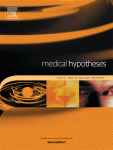- Reaction score
- 194
Abstract
Androgenic alopecia, also known as pattern hair loss, is a chronic progressive condition that affects 80% of men and 50% of women throughout a lifetime. But despite its prevalence and extensive study, a coherent pathology model describing androgenic alopecia’s precursors, biological step-processes, and physiological responses does not yet exist. While consensus is that androgenic alopecia is genetic and androgen-mediated by dihydrotestosterone, questions remain regarding dihydrotestosterone’s exact role in androgenic alopecia onset. What causes dihydrotestosterone to increase in androgenic alopecia-prone tissues? By which mechanisms does dihydrotestosterone miniaturize androgenic alopecia-prone hair follicles? Why is dihydrotestosterone also associated with hair growth in secondary body and facial hair? Why does castration (which decreases androgen production by 95%) stop pattern hair loss, but not fully reverse it? Is there a relationship between dihydrotestosterone and tissue remodeling observed alongside androgenic alopecia onset?We review evidence supporting and challenging dihydrotestosterone’s causal relationship with androgenic alopecia, then propose an evidence-based pathogenesis model that attempts to answer the above questions, account for additionally-suspected androgenic alopecia mediators, identify rate-limiting recovery factors, and elucidate better treatment targets. The hypothesis argues that: (1) chronic scalp tension transmitted from the galea aponeurotica induces an inflammatory response in androgenic alopecia-prone tissues; (2) dihydrotestosterone increases in androgenic alopecia-prone tissues as part of this inflammatory response; and (3) dihydrotestosterone does not directly miniaturize hair follicles. Rather, dihydrotestosterone is a co-mediator of tissue dermal sheath thickening, perifollicular fibrosis, and calcification – three chronic, progressive conditions concomitant with androgenic alopecia progression. These conditions remodel androgenic alopecia-prone tissues – restricting follicle growth space, oxygen, and nutrient supply – leading to the slow, persistent hair follicle miniaturization characterized in androgenic alopecia.
If true, this hypothetical model explains the mechanisms by which dihydrotestosterone miniaturizes androgenic alopecia-prone hair follicles, describes a rationale for androgenic alopecia progression and patterning, makes sense of dihydrotestosterone’s paradoxical role in hair loss and hair growth, and identifies targets to further improve androgenic alopecia recovery rates: fibrosis, calcification, and chronic scalp tension.
Conclusions
Androgenetic Alopecia is the result of chronic GA-transmitted scalp tension mediated by pubertal and post-pubertal skull bone growth and/or the overdevelopment and chronic contraction of muscles connected to the GA. This tension induces a pro-inflammatory cascade (increased ROS, COX-2 signaling, IL-1, TNF-α, etc.) which induces TGF-β1 alongside increased androgen activity (5-αR2, DHT, and AR), which furthers TGF-β1 expression in already-inflamed Androgenetic Alopecia-prone tissues. The concomitant presence of DHT and TGF-β1 mediates perifollicular fibrosis, dermal sheath thickening, and calcification of the capillary networks supporting Androgenetic Alopecia-prone hair follicles. These chronic, progressive conditions are the rate-limiting factors in Androgenetic Alopecia recovery. They restrict follicle growth space and decrease oxygen and nutrient supply to Androgenetic Alopecia-prone tissues – leading to tissue degradation, hair follicle miniaturization, and eventually pattern baldness.
A hypothetical pathogenesis model for androgenic alopecia: clarifying the dihydrotestosterone paradox and rate-limiting recovery factors
Androgenic alopecia, also known as pattern hair loss, is a chronic progressive condition that affects 80% of men and 50% of women throughout a lifetim…
